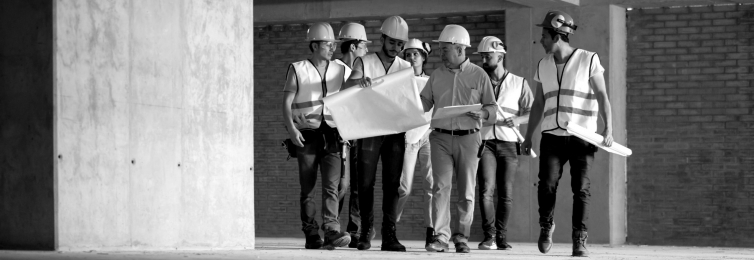On every job-site, a culture of safety starts from the top and extends to each employee. From the company owner to the laborer, maintaining a safe environment is a responsibility in everyone’s job description. A safe culture leads to better morale, less turnover, increased productivity, and a positive reputation for your company.
Assessing and managing on-site hazards sets a solid foundation for safe working conditions and is one of the most effective ways to protect your most valuable assets—your workers. It’s imperative to have a strong safety program in place to recognize, support, and correct hazards before they cause injury or illness. In this article, Stacey Kitchen, Risk Management Regional Manager for Builders Mutual, provides some key insights into the practice of hazard management.
A hazard, defined
Most drivers are familiar with the concept of a road hazard—a big pothole ahead, material in the street that has dropped off a truck bed, or even dense fog creating poor visibility. Similarly, a job-site hazard is any source or condition that has the potential to cause damage, harm, or adverse effects to someone or something. A simple example is an unguarded opening, whether it’s in the floor or in a wall. If it’s not guarded, it’s a hazard because there’s nothing to protect a person from falling in, through, or out.
Identifying a hazard
Once a person on the job-site spots a hazard—big or small—it’s vital for that worker to take a “what if?” approach. Asking what-if questions helps the person understand the risk and the possible consequences if no action is taken. Using the what-if approach can help anyone on the job-site identify the potential for injury, illness, or property damage and take preventative measures to increase site safety.
It’s imperative to conduct a job-site risk assessment, establishing regular and frequent inspections of the site, equipment, and materials. Because your team members are really the onsite experts, ask them about any specific situation, process, or equipment that may have the potential to cause harm. Job-sites are in a constant state of change, with different trades rotating in and out, job phases progressing, and changing weather conditions. Be sure to communicate often with team members to keep assessments current. Remember to document all your efforts in writing, as these notes could be a valuable reference in the event of an incident or if OSHA visits your site.
Typical hazards on the construction site
Citing every potential hazard here isn’t possible. But here’s a list of common areas and circumstances on a job-site where hazard management is needed:
- General housekeeping concerns, to include sanitation around the COVID-19 outbreak.
- Slip, trip, and fall hazards, including cords, debris, and wet or muddy surfaces.
- Electrical hazards like exposed wires.
- Equipment operation safety and equipment inspection/maintenance to prevent struck-by or caught-in injuries.
- Fire protection, including fire extinguishers, hot work permits, and proper flammable storage.
- Work process and workflow, especially regarding staffing and scheduling of trades.
- Work practices aligned with OSHA and industry regulations (working at heights and depths, PPE usage, etc.).
- Ergonomic issues and overexertion risks, such as awkward lifting, postures and repetitive tasks.
- Lack of emergency procedures. Be sure that proper procedures are discussed, posted, and understood.
Evaluate and improve the situation.
Hazard exposures differ markedly. Sometimes, a hazard can be easily eliminated by anyone on the site. Picking up site trash is a great example of this. Other situations necessitate hazard reduction, because complete removal isn’t possible. The improvement may need to be engineered—by adding a guardrail, for instance. Or, perhaps a new process can be created so the hazard can be avoided. Regardless, it is your duty as an employer to control and eliminate all hazards to protect your workers:
- Identify the severity of the exposure and the potential impact.
- Be sure to put a control measure in place to protect workers until something more permanent can be created and implemented.
- Be careful to prioritize each hazard, ensuring the most critical and threatening risks are tackled first.
Hazard management is an ongoing process.
At its core, hazard management is an ongoing process of action, evaluation, and training.
Train employees to identify hazards, and encourage them to speak up when necessary. If there is an exposure that seems to arise repeatedly, maybe it’s time for a culture shift. Ask your team how things can be done differently to eliminate or reduce the hazard—and support the changes. Keep everyone involved in the practice of hazard management. Remember, those individuals doing the work have the best understanding of what creates hazards and how to control them.
Working together to identify and address exposures will also lead to team buy-in and accountability. And this empowerment goes a long way toward creating and maintaining a strong culture of safety.
Content reviewed 8-2022




 Find an
Find an